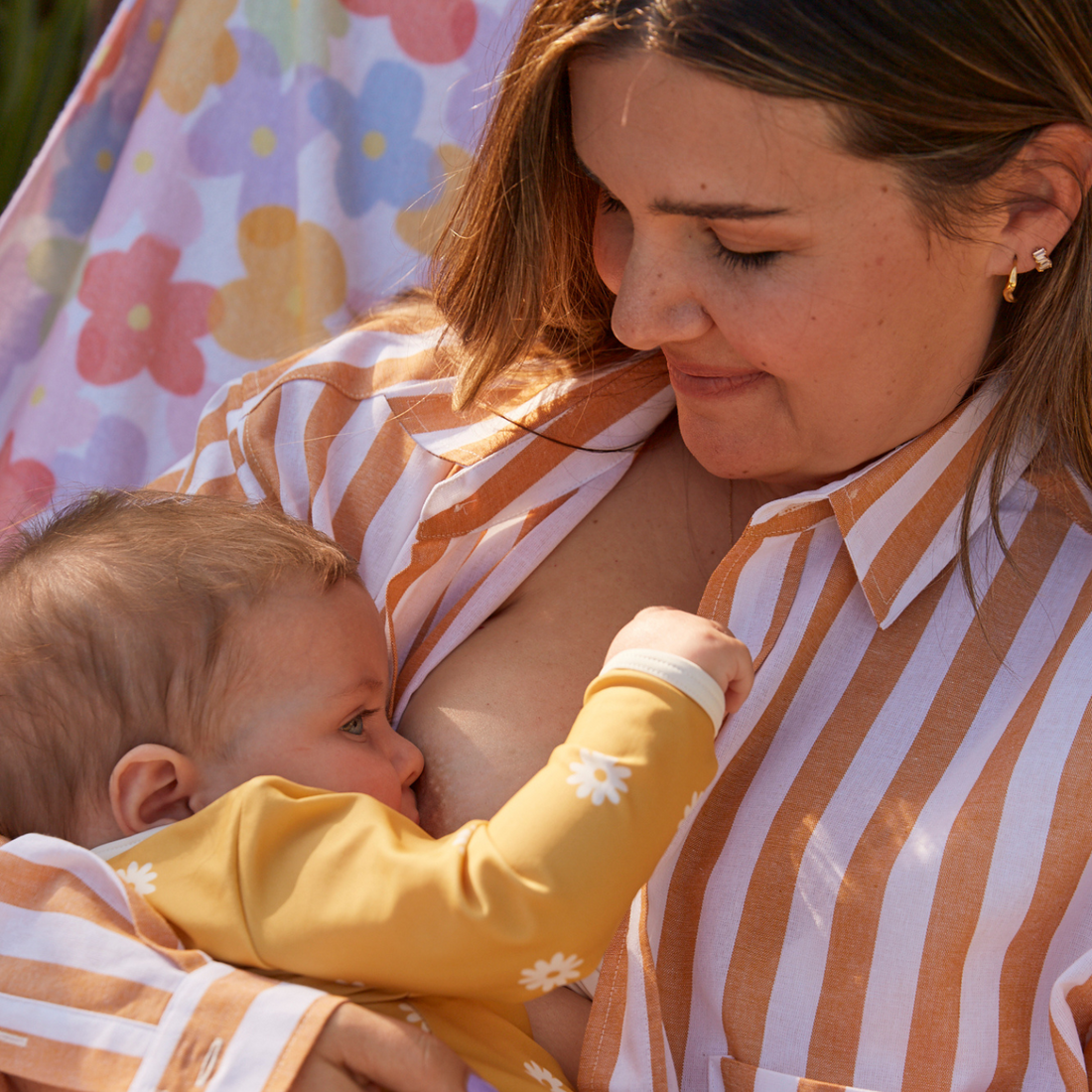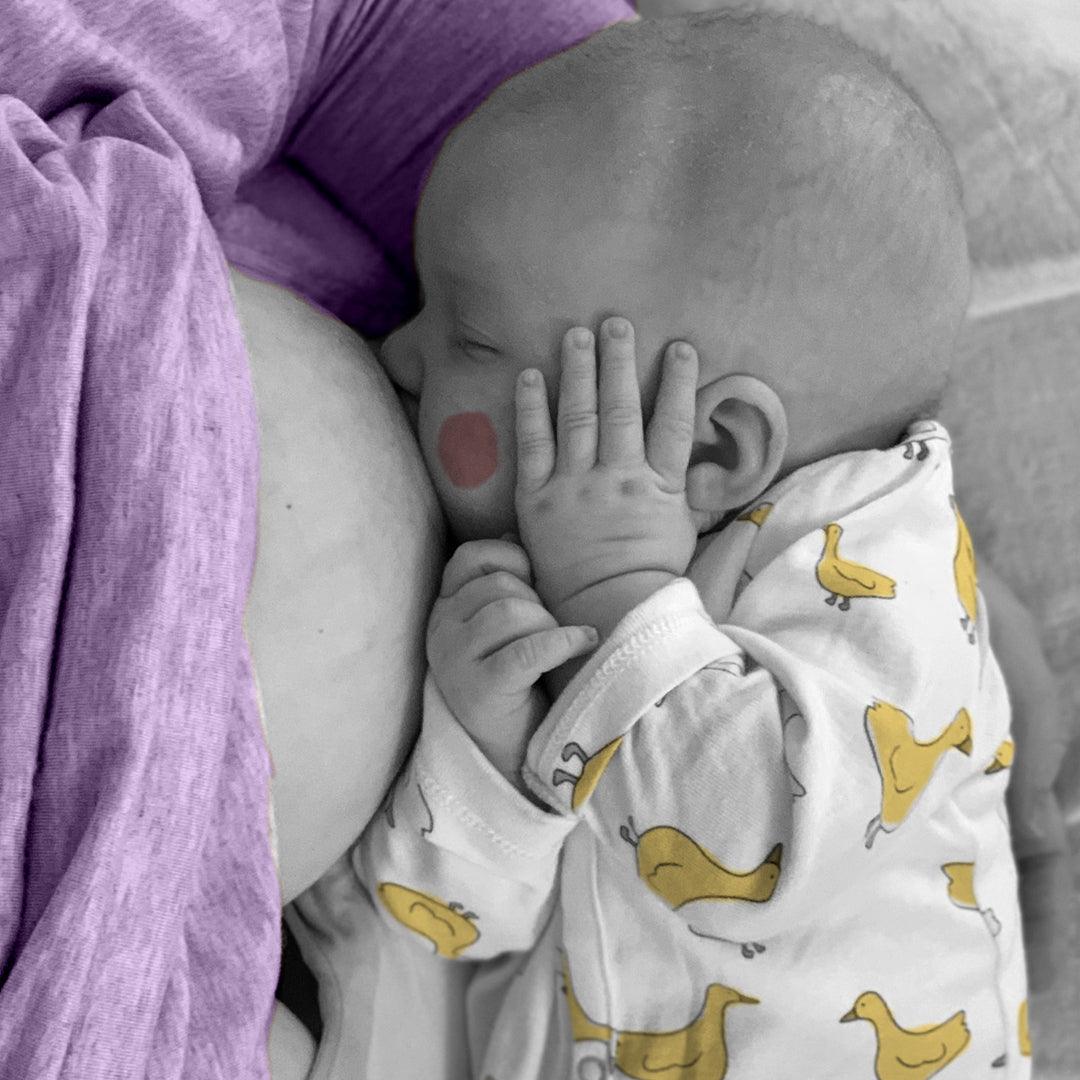A lactation consultant weighs in
For every successful breastfeeding story, there’s one (or 10) that are more… challenging. From supply, to latch, intolerances, mastitis, and the hormones (the hormones!) for something that’s dubbed as “the most natural thing in the world” it can feel decidedly unnatural. Also there’s the part where a small human is sucking from something that, up until that point, was purely decorative which can be just plain weird at first. And all of that is just the physical part — the emotional rollercoaster part of the journey is a whole other story.
But back to the physical part. Because every breastfeeding experience is so different, it can be hard to know what’s normal, and what definitely isn’t. Weird is one thing, but is it meant to tingle — or hurt? We took all our questions to Joelleen Winduss Paye, Holistic International Board Certified Lactation Consultant (IBCLC), Midwife and Naturopath to find out.
How is it supposed to feel?
Good question! If you’ve never done it before, how are you supposed to know what “normal” is? Joelleen says “when you are breastfeeding for the first time, you will be looking for a sucking/vacuum feeling and strong tugging or pulling sensations.” Yes, it will take a while to get used to this new sensation, and yes you may even be a little (or, a lot) shocked at the intensity of his/her suck. And remember, not only can the sucking strength of a baby vary, each person’s experience or tolerance of pain is different too. “Mothers who have had a spinal or epidural procedure during labour may experience some reduced sensitivity as the pain medication may temporarily block certain nerves around the nipple and breast area,” Joelleen notes, so if this is you, take extra care in ensuring the latch is correct.
What about if it hurts?
If the tugging feeling veers into “pinching” or a sharp pain, that’s when you need to reassess. “This may indicate that your nipple isn’t deep enough into your baby’s mouth, aka: a shallow latch,” says Joelleen. “When the nipple is not deep enough into the baby’s mouth, it will be compressed with the hard structures in the baby’s mouth (gums and roof of mouth),” she says. And that’s when those sharp sensations can happen. The aim is to achieve a deep latch by moving the nipple further back into the baby’s mouth, which will make everything a lot more comfortable.
Are the nipples meant to feel sore?
This is a tricky one to answer, because of course if you’re new to breastfeeding some tenderness, roughness and dryness is to be expected since the nipples have never been used in that way before and you’re probably still finding the best breastfeeding position and fit. However — and this is a big however— there is a lot that doesn’t fall under “normal”. If you’re experiencing cracks and grazes at the tip of the nipple, it could indicate the prolonged compression we were talking about which can be painful, so best to get your technique assessed. If there’s flaking or scaling skin, it could be a sign of dermatitis, and if there’s a yellow crust around the nipple, it could potentially indicate a bacterial infection. Either way, if something seems or feels wrong to you, follow your instinct and seek the help of a health professional.
There is pain… but what is it?
Joelleen gives us a rundown of the most common types of pain associated with breastfeeding, but straight up: if it’s hurting or uncomfortable in any way you do not have to tough it out. There are trained people (hello, lactation consultants and midwives) who can help to support you and make this a positive experience.
Suboptimal latch: This is the one we’ve talked about the most, and Joelleen says is “the most frequent cause of nipple pain as it can cause friction on the nipple resulting in skin breakdown which needs to heal then to allow for comfort during breastfeeding.” The “healing” part here is essential, as it won’t get better if you just power through.
Ill-fitting breast pump: Things we didn’t know before baby: there are actually different size flanges (the part that comes into contact with your body) for breast pumps, and if you haven’t been fitted and measured properly it can cause issues. “Using a flange that sucks in the areola and breast tissue can cause inflammation around the nipple and permanent changes in the nipple shape,” says Joelleen. “More suction doesn't equal more milk, go gentle, and find what feels comfortable for you so you can use a breast pump in a sustainable way without causing pain.” Confused? Here’s how to get it right.
Vasospasm: “This is a painful nipple condition where blood vessel and nerve changes have occurred resulting in spasm-like sensations within the nipple, often accompanied by sharp shooting and pulsing pain,” says Joelleen. This often happens alongside a colour change in the nipple, say from deep purple to white, because of the change in circulation. Seeing an IBCLC and getting the necessary help is essential if you’re experiencing any of these symptoms.
Engorgement: When breast milk production begins and the volume of milk increases (generally 72 hours post birth) many women can experience tenderness and tightness in the breasts. Joelleen says this is because of all the blood flow and fluids required to produce the milk. The good news is, this is temporary and can be alleviated through expressing or breastfeeding to relieve pressure and the use of cold therapy with ice packs.
Inflammation: When there is inflammation in the breast tissue, naturally the breasts may also feel sore. “This may present as a hard, warm and red lump and will often be ‘diagnosed’ as mastitis,” says Joelleen, and in some cases the inflammation can advance into mastitis (more on that here) or even a breast abscess. However, if it’s observed closely by a professional it can be managed correctly and resolved with good breastfeeding technique, maintaining supply and demand, cold therapy, rest, hydration, breastfeeding probiotics and potentially even therapeutic ultrasound. Not to sound like a broken record here, but the running theme is if it feels off, speak to your midwife or lactation consultant — they are here to help. Your breasts will thank you for it.
























